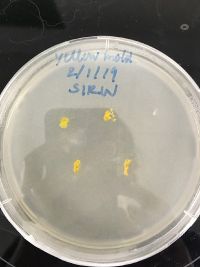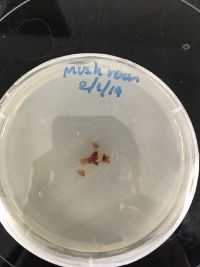GMU:DIY Bio: doing things with biology/Sirin Unmanee/08.12.2018 : Growing Bacteria for my Project: Difference between revisions
No edit summary |
No edit summary |
||
| Line 14: | Line 14: | ||
In bacteria, pigment formation is associated with morphological characteristics, cellular activities, pathogenesis, protection and survival. | In bacteria, pigment formation is associated with morphological characteristics, cellular activities, pathogenesis, protection and survival. | ||
Pigments are produced by bacteria to absorb UV radiation or to quench oxygen free radicals. In both the cases bacterial pigment play important role of the cell protection. Some bacterial pigments are antibiotics which are active against phytopathogenic fungi, bacteria, and yeasts; also active against human pathogenic Gram positive or negative bacteria and fungi. | Pigments are produced by bacteria to absorb UV radiation or to quench oxygen free radicals. In both the cases bacterial pigment play important role of the cell protection. Some bacterial pigments are antibiotics which are active against phytopathogenic fungi, bacteria, and yeasts; also active against human pathogenic Gram positive or negative bacteria and fungi. | ||
'''source : [https://www.biotecharticles.com/Applications-Article/Colorful-Bacteria-612.html]''' | <br />'''source : [https://www.biotecharticles.com/Applications-Article/Colorful-Bacteria-612.html]''' | ||
[[File:S__2596901.jpg|200px]] [[File:S__2596899.jpg|200px]] [[File:S__2596894.jpg|200px]] | [[File:S__2596901.jpg|200px]] [[File:S__2596899.jpg|200px]] [[File:S__2596894.jpg|200px]] | ||
Revision as of 18:15, 5 January 2019
In this document, I attempt to capture the shape of each bacteria that I'm cultivating, using them as a reference for my project[1] Then, I will generate graphic visuals from their electric capacity, based on their form.
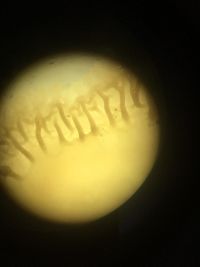
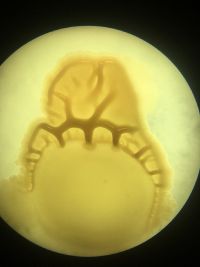
08.12.2018 - 11:30 Bacteria from Kombucha with Gluconcetobacter medium under the microscope


08.12.2018 - 11:30 Bacteria from Kombucha with LBP medium under the microscope
Then, I worked with bacteria form dialy life stuffs, smartphone and doorknob. The result is interesting, because they produced a different form even I cultivated them with the same medium. The bacteria from smartphone formed tiny yellow/orange dots, which is quite the same as a yellow bacteria form Kombucha, while the bacteria from door knob formed diffuse white dots all over the medium's surface.
So, I searched for the information about different types of bacteria due to its color, then found out that the yellow/orange bacteria is probably called Staphylococcus Citreus and the white is probably called Staphylococcus Epidermidis, however, I'm not so sure since I just only compared my bacteria with the example shown example on the website.
In bacteria, pigment formation is associated with morphological characteristics, cellular activities, pathogenesis, protection and survival.
Pigments are produced by bacteria to absorb UV radiation or to quench oxygen free radicals. In both the cases bacterial pigment play important role of the cell protection. Some bacterial pigments are antibiotics which are active against phytopathogenic fungi, bacteria, and yeasts; also active against human pathogenic Gram positive or negative bacteria and fungi.
source : [2]
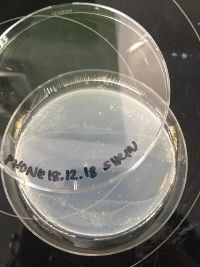


02.01.2019 - 13:30 Bacteria from a smartphone with LBP medium
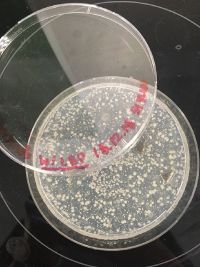


02.01.2019 - 13:30 Bacteria from a door knob with LBP medium
Also, I worked with fungus, which are mold from a bread and a mushroom. I used a simple Agar medium but with a little portion of yeast.
I left my bread for about 3 weeks until it is completely covered by mold. At the beginning, I only expected the green mold which can be normally seen, but there is also a yellow mold.
The type of mold that most commonly appears as yellow is Aspergillus.

